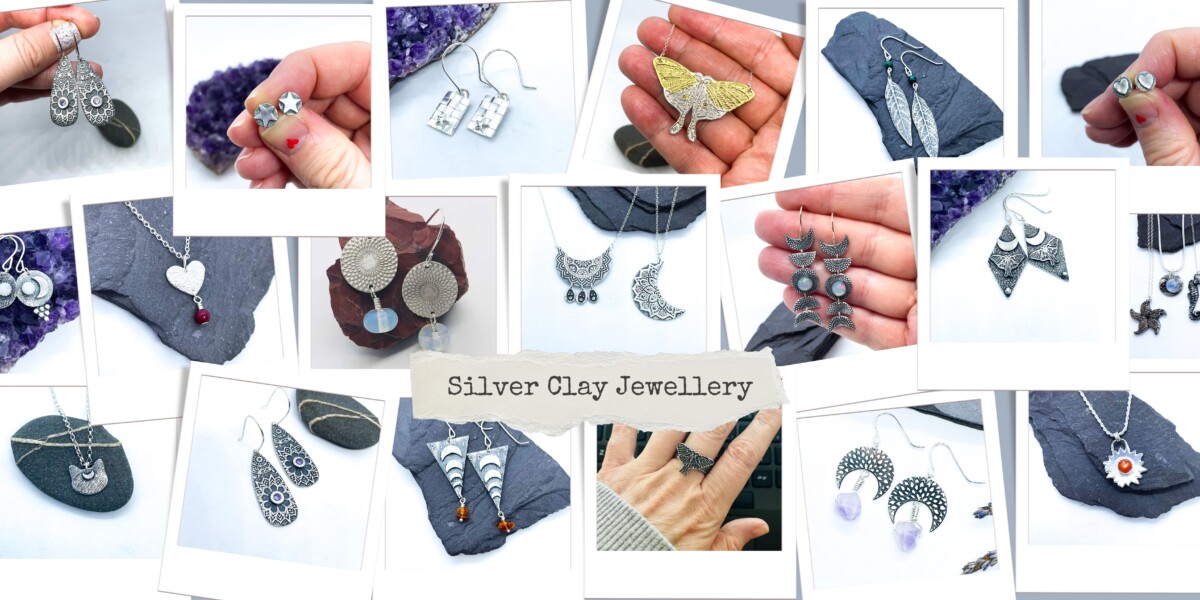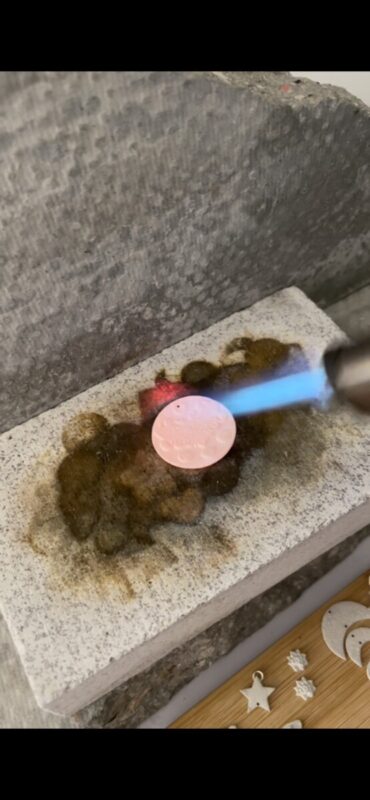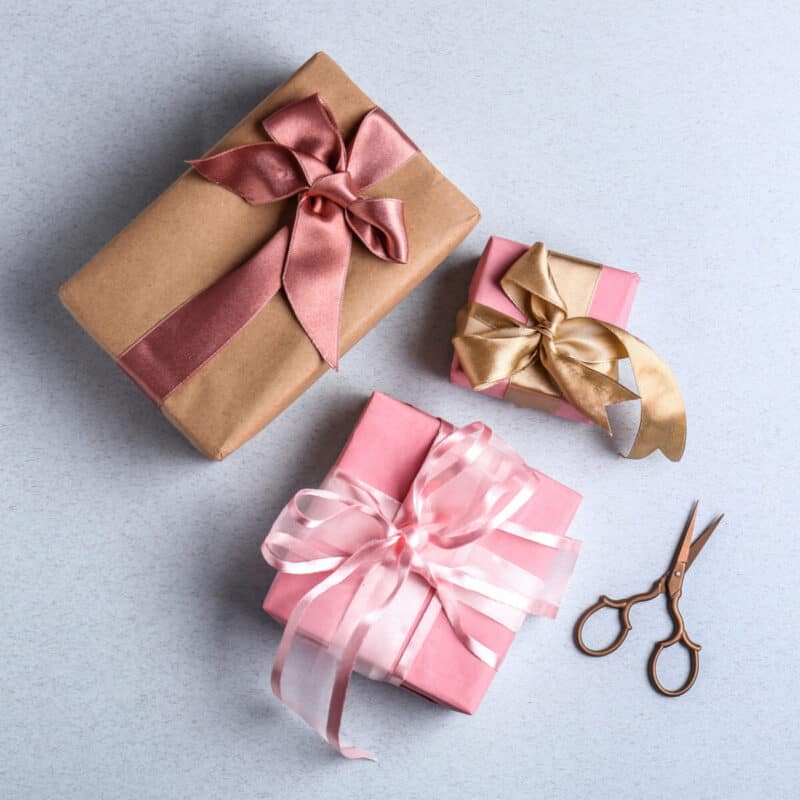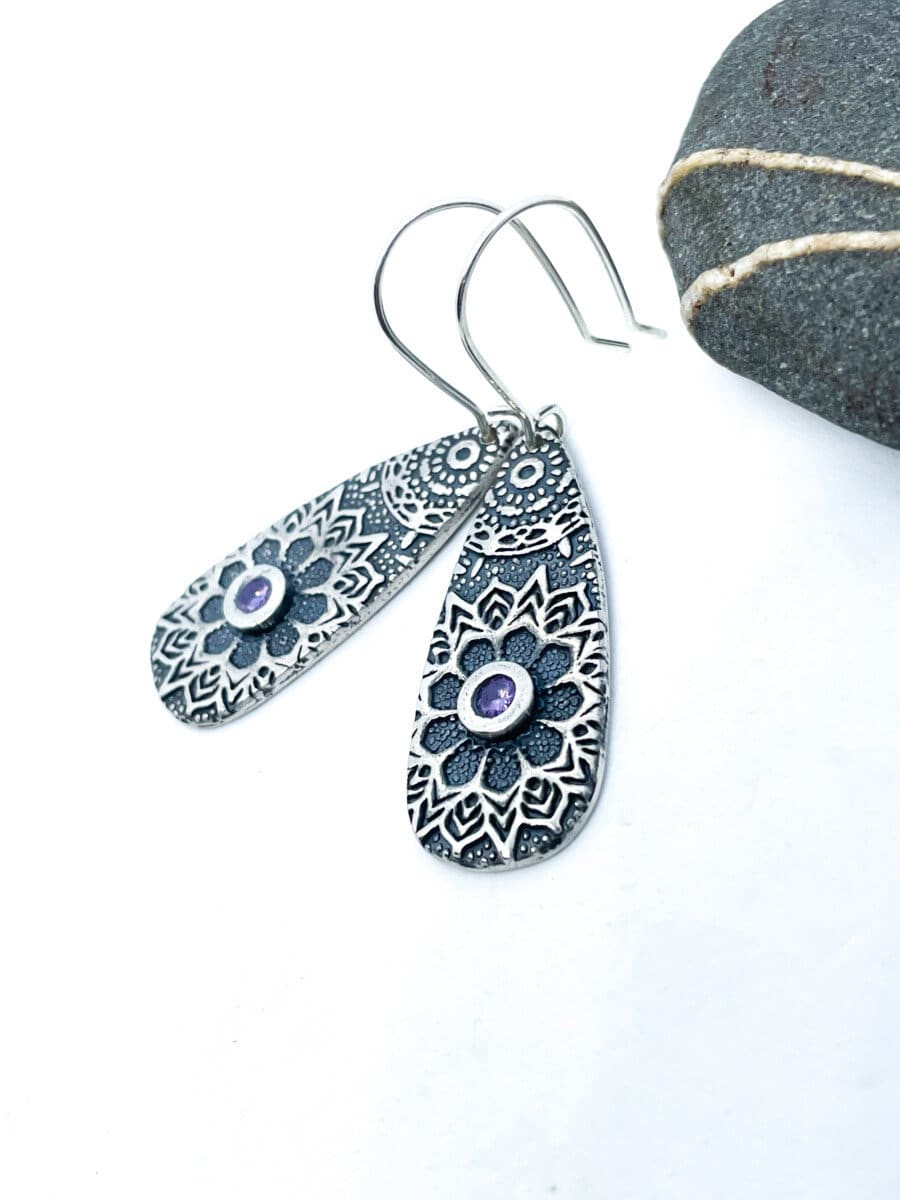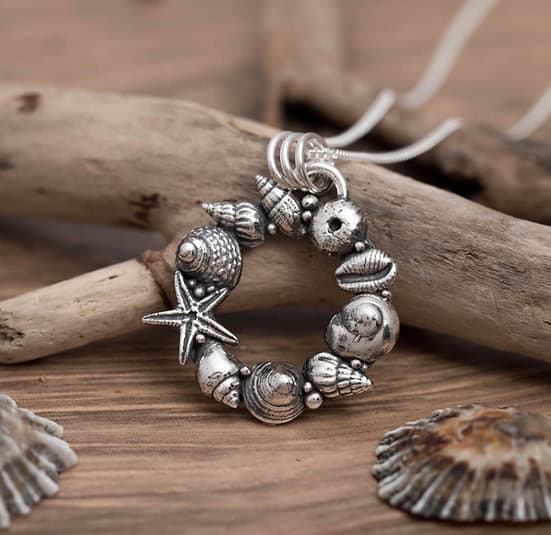Art Talk
Silver Clay Jewellery
What is Silver Clay Jewellery?
History of Silver Clay
Silver clay, a new kind of material for making jewellery, was first created in the early 1990s in Japan by a metallurgist named Masaki Morikawa. He was experimenting with powder metallurgy when he came up with the idea for silver clay.
Masaki Morikawa mixed powdered metal with organic binders and water in 1992, making a soft, mouldable form of silver. This was the start of what we now know as silver clay.
Shortly after, the Mitsubishi Materials Corporation began selling this new material under the name “PMC” (Precious Metal Clay), introducing it to artists and craftsmen all over the world.
As silver clay became more popular, other types of metal clay were also developed. These included gold, copper, bronze, and more, each with its own special features for crafting. The ease of use compared to traditional metalworking methods like casting or soldering quickly made silver clay popular among jewelry makers.
Over time, technology improved silver clay, making it possible to create pieces with finer details. New versions of the clay were also stronger, more durable, and flexible.
Today, artists everywhere use silver clay to make a wide range of jewellery pieces, from simple designs to complex sculptures. Its flexibility and user-friendliness make it a favourite choice for both beginners and experienced creators.
A New Craft
As silver clay has evolved, a diverse range of varieties have emerged, each distinguished by its own set of properties like shrinkage rates, firing temperatures, and finishes.
Artists have creatively adapted to these varieties, exploring a wealth of techniques to manipulate silver clay. These methods include molding, carving, adding texture, and even incorporating gemstones into their designs. A crucial stage in the creation process involves firing the silver clay, which can be done in a kiln or with a torch, solidifying the artist’s work into a final, wearable piece.
Silver Clay vs. Traditional Metalworking Techniques
Silver clay is easy to work with, allowing you to shape, mould, and add details without much effort. Traditional metalworking, however, often needs tools like hammers and anvils.
To turn silver clay into solid silver, it’s usually heated in a kiln, which burns away a binder material. In comparison, working with metals traditionally might involve techniques like soldering or casting. Silver clay is great for creating detailed designs easily, unlike traditional methods that require more skills and special tools.
This makes silver clay a friendly option for both beginners and experienced artists, while traditional metalworking might be more challenging and need more equipment.
Types of Silver Clay
While the world of metal clay has expanded to include a variety of materials such as bronze and gold, each offering its unique benefits and creative possibilities, for the purpose of this blog post, we will focus specifically on silver clay.
Contains pure silver particles, organic binders, and water and shrinks about 10-30% during the firing process. You can buy Original Art Clay at Kernow Craft
Silver Art Clay Paste is used for texturing effects and repairs. It’s texture makes it easy to paint on, to product textured effects or leaf jewellery.
Sterling Silver Metal Clay contains a higher percentage of silver particles, often mixed with a binder like cellulose. It is exceptional quality.
Contains additional binders or plasticizers to make it more flexible after drying and firing. Flexible Silver Clay or Silver Clay Paper can be used to create intricate woven designs.
Silver Clay Jewellery make a Unique Gift
Handmade silver clay jewellery is a great gift choice for many reasons. Each piece is unique, showing the special touch of the artist who made it, something you won’t find in items made in large numbers. Artists can also make these pieces to fit the personal tastes of whoever you’re giving it to, making the gift even more special.
The quality of handmade jewellery is often higher because of the care and passion that goes into making each piece. Buying handmade supports small businesses and the artists behind them, keeping traditional crafts alive. Plus, choosing handmade jewellery like silver clay is better for the environment than opting for mass-produced items, since it leaves a smaller footprint.
Cleaning and Caring for Silver Clay Jewellery
To keep your handmade silver clay jewelry looking its best, it’s important to follow some easy care and cleaning tips. These special pieces need a little extra attention to stay shiny and beautiful. Whether it’s a piece you treasure or a thoughtful gift, the right care will keep it looking great for a long time. Here are some simple steps to help you take care of your silver clay jewelry, so it remains as stunning as when you first got it.
Cleaning:
- Mild Soap and Water: For routine cleaning, gently wash your jewelry with mild soap and warm water. Use a soft toothbrush to remove any dirt from crevices. Rinse well and pat dry with a soft cloth.
- Polishing Cloth: To restore shine, use a special silver polishing cloth. These cloths are impregnated with a gentle polish that will not scratch the surface.
- Avoid Harsh Chemicals: Silver clay jewelry should not be exposed to harsh chemicals, including chlorine, bleach, and ammonia, which can damage the surface.
Care:
- Storage: Store your silver clay jewelry in a cool, dry place away from direct sunlight. A tarnish-preventive bag or a box lined with tarnish-resistant strips is ideal.
- Wear with Care: Remove your jewelry when performing tasks that could scratch or damage it, such as gardening, cleaning, or engaging in sports.
- Chemical Exposure: Avoid exposing your jewelry to household chemicals, cosmetics, perfumes, and lotions, which can tarnish or damage the surface over time.
- Periodic Checks: Regularly inspect your jewelry for any signs of wear or damage. This includes checking clasps and settings to ensure they are secure.
By adhering to these care instructions, you can help ensure that your handmade silver clay jewelry remains beautiful and cherished for years to come.
Discover
The Beaded Magpie
Our very own Kerry, creates magic with both her kiln fired work and blowtorch in her Silver Clay shop The Beaded Magpie
Shop nowTimes to Treasure
One of my favourites and Grainne, silver clay Artist over at Times to Treasure takes it to a whole new level with her Hinged Pendants.
Shop now
